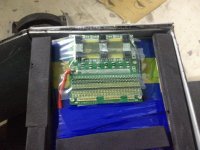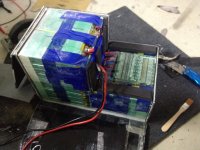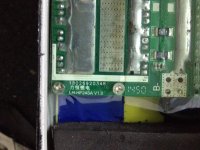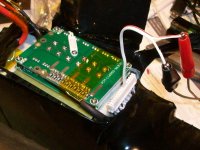Thanks for your inputs folks,
I'll try to explain a bit better the situation:
My scooter battery is divided into two paralleled batteries: the first one is a 72V 30Ah (24s3P), the second one is a 72V 20Ah (24S 2P). Each having its own BMS.
Here is how the first one looks like inside:
The BMS:

The cells connections: Looks sketchy but it worked very well for the past years, and it's beeen beaten pretty hard so nothing wrong with that in the end.
View attachment 4
3 cells are a bit on the low side and started to puff, I'll change them

This first pack works well, when I connect a voltmeter to its ends, I get the same reading as before the BMS. Just have to change the defective cells and it should be good to go again.
Now, the second pack:

The BMS:

The reference appears to be LH-HP24SA V1.0
I haven't measured all the cells individually yet, because, as you can see, they are pretty hard to access to. But I'll try to do that soon. But the total reading before the BMS seems to be coherent with what it should be.
The problem I have is on this second battery: I get a different voltage reading before and after the BMS.
Before: 78V
After: 67V
I thought about a BMS shutoff, but generally when this happens I just have to connect the battery to the charger for around one minute and it's back again. So i did try that, the battery seemed to charge normally, but after disconnecting the charger it still have this 11V difference. I didn't put any load on it yet so I will try that, but the BMS seems alive to me, usually when it shuts off I read around 0V or maybe 2-3V. Definitely not 67.
What puzzles me is that the first battery doesn't seem to behave at all the same way. First one behaves totally normal.
Anyway, I'll do some more tests, but if anyone has any clue about what might happen here feel free to give me any leads.

Thanks!







